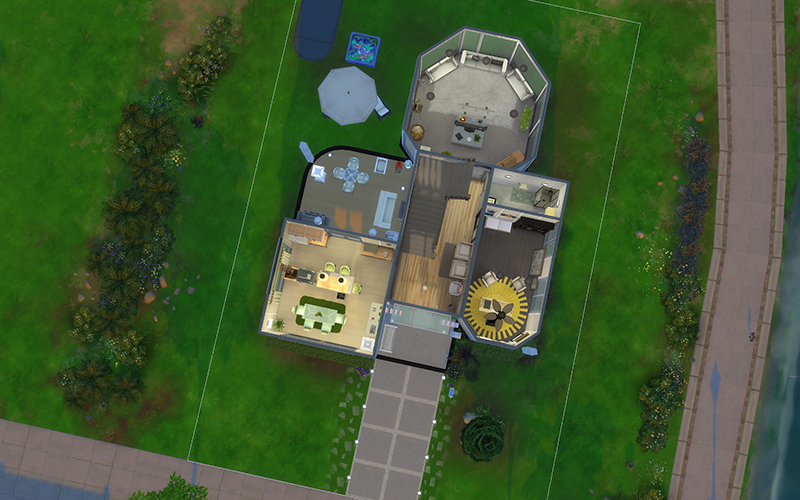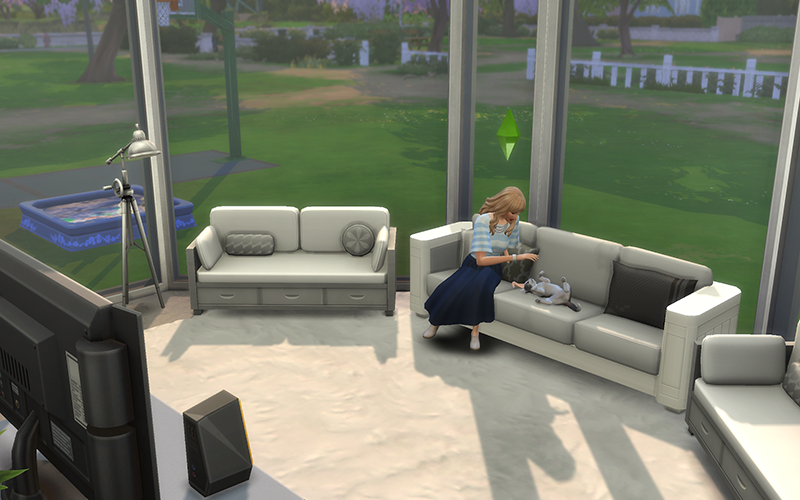In collaboration with Jun Yi Chong
“The impact architecture has on a person’s mood is huge. Arguably these are the fundamentals of architecture: not how it looks, but how we feel it, through the way it allows us to act, behave, think and reflect,”
- Dr M. Dodd, ‘How architecture uses space, lighting and material to affect our mood’ 2016, Independent
Often the environment in narratives are quickly overlooked at the start given our attention is primarily focused on originality and character development. Only until we’ve reached a scene where the context becomes the sole focus, or when the narrative is deconstructed into components, it slowly reveals a composition of visuals, sounds, physics, the list goes on. This is no different to gaming design as the countless hours spent on articulating spaces ultimately affects the architectural experience. Only this time it is happening in the digital realm. When we direct the protagonist through various maps that we can begin to appreciate the surrealism or the hyper-realism of the backdrop that has been achieved in the digital realm.
Similar to users of OASIS in Ernest Cline’s Ready Player One, video games generally presents itself as an opportunity for users to escape from their everyday schedule. The sense of voyeurism is what makes games special and enjoyable. Regardless, gaming provides users with the ability to take elements of what they like admiring and into their own digital world and bask in their own world of beauty. On the other hand, we can argue that the architecture in the digital realm is almost a reflection of creative visions creators have on our everyday spectacle - hence these worlds are often also translated into film and photography, and vice versa.
Yet what happens when the players have control in building their own architecture?
The video game industry has and still continues to provide entertainment for many years. Covering many genres like sports, action, strategy and simulation to suit every person. For instance, the classic life-simulation game 1.The Sims, has been made popular by its open-ended, no-objective gameplay and free will. The game grants the gamer full control; from fulfilling the whims of their sim (avatar) to the very shape of their nose. This kind of flexibility has attracted many types of players. There are gamers who dream of leading a different life and live vicariously through their sims, there are those who enjoy pushing moral boundaries and those who enthuse and appreciate the design aspect of the game. In this virtual realm, there are no rules, no legal restrictions, no complaining neighbours, and best of all, no budgets!
For this reason, The Sims™ has become a platform for architectural creators to express their creativity without any limits.
The front view of this modern two bedroom, two bathroom house, via The Sims™4, developed by Maxis and published by Electronic Arts, first published in 2014.
Floor Plan of the Ground floor, via The Sims™4, developed by Maxis and published by Electronic Arts, first published in 2014.
Rear of the house: two Sims watching TV in the sunroom with a glass pyramid hip roof and floor-to-ceiling windows, via The Sims™4, developed by Maxis and published by Electronic Arts, first published in 2014.
Arguably, The Sims™ also draws some parallels to how some approach architecture. It may be through design-build homes, off-the-shelf templates otherwise seeking an architect to do so which is all controlled by the user. To some extent, the gameplay ironically almost mimics the offsetting of lines and extruding walls we frequently use in architecture school. The illusion of the infinite plane from these programs encourages us to build enthusiastically. With no warnings that the cantilevered room would collapse or that these stairs would not fit the space, the freedom is palpable between these two worlds. Indeed, there are additional complexities placed in 2.Rhino, Revit, ArchiCAD and Sketchup, but these programs still offer the freedom in which The Sims have enforced in their world.
Albeit, once the additional plug-ins are added and conversations with experts in other fields that we realise the feasibility of the designs. Perhaps those floor to ceiling windows would be good, but we would be asking for a greenhouse if it was placed under the Australian Sun. On the other hand, more support in the structure may be needed should we want to pitch a glass roof at that height. Distinguishing the differences between the virtual and real-world may sound pessimistic, however, we need to acknowledge that Will Wright (founder and creator of The Sims™) created this game as a reflection of the process of building a satirical lifestyle. This virtual dollhouse is a window of ‘what-if’s, and that it isn’t the final results that matters, but rather allow us to enjoy the process towards the finished product.
“The Sims gives a good perspective on how users would interact with architecture…” - A. Ryan
It is true that in a modernised world we are constantly surrounded by architecture and little did we know that it can have an impact on our psyche. A well-lit room could even improve our mentality, some could attest that it has a positive correlation. The Sims™ has made every attempt to emulate real-life that when you place a sim in a well decorated and nicely lit room, it helps generate their creative juices, yielding them an “inspired” and “happy” moodlet. The sim in the image below playing with her cat in a beautiful room is in a great mood (hence the green diamond above her head).
A screenshot of a sim enjoying the company of her cat in a cosy sunroom via The Sims™4, developed by Maxis and published by Electronic Arts, first published in 2014.
The game play of The Sims offers another message expressed through the sims’ varied behaviours. The shortcomings, however, is a question of timelessness presented in this world due to the lack of realistic context. As designers, we often forget that sometimes a finished result does not result in longevity of positive feelings. Understanding that timelessness means a constant change in the relationship between architecture and the user. Perhaps then, immersing in a game may provide an opportunity for us to do so.
When we are exposed to architecture, we are unknowingly affected by how the designer simultaneously choreograph space and our feelings. We could also say the same for the architectural designs found in the digital realm. The backdrop will always serve as an important context for the player to navigate, strategise and understand the narrative of the game.
It’s a world for us to imagine and have fun, really.
Twitter Thread from @thalestral - published 29 June, 2019. Source: http://bit.ly/2ot55H5
Other readings: The Narrator that Shaped Architecture, 2016
Notes:
Developed by Maxis and published by Electronic Arts
3D Software commonly used by Designers
Resources & References:
Cline, Ernest, ‘Ready Player One’ (2012), Published by Arrow Books
Ricci, Natali, "The Psychological Impact of Architectural Design" (2018). CMC Senior Theses. 1767
Gander, Kashmira, “How architecture uses space, light and material to affect your mood” (19 April, 2016), Independent. https://www.independent.co.uk/life-style/design/how-architecture-uses-space-light-and-material-to-affect-your-mood-american-institute-architects-a6985986.html
About Jun Yi Chong
Jun Yi Chong is a dental student at the University of Melbourne in her penultimate year. In her perspective, the practice of dentistry is an exciting combination of both art and science.
Jun enjoys flipping through coffee table books about architectural and interior design and pays particular interest in residential architecture. The Sims™ was a big part of her late childhood to early teenage years, spending many hours on it for leisure. At present, The Sims™ 4 plays an important role as her architectural creative outlet.






